My website may contains affiliate links. This means if you click and make a purchase, I may receive a small commission. Don’t worry, there’s no extra cost to you. It’s a simple way you can support our mission to bring you quality content. 
Costa Rican cuisine is like a flavor-packed journey through centuries of cultural influences and local ingredients. Each dish tells a story of the land and its people, offering a unique taste bud adventure. Whether it’s the hearty staples or the exotic treats, there’s something to get everyone’s mouth watering.
The Rich History and Cultural Influence on Costa Rican Cuisine
Costa Rica: A Flavorful Melting Pot
Imagine a place where ancient indigenous traditions, Spanish colonial legacies, African rhythms, and Caribbean vibes collide in a symphony of flavors. That’s Costa Rica.
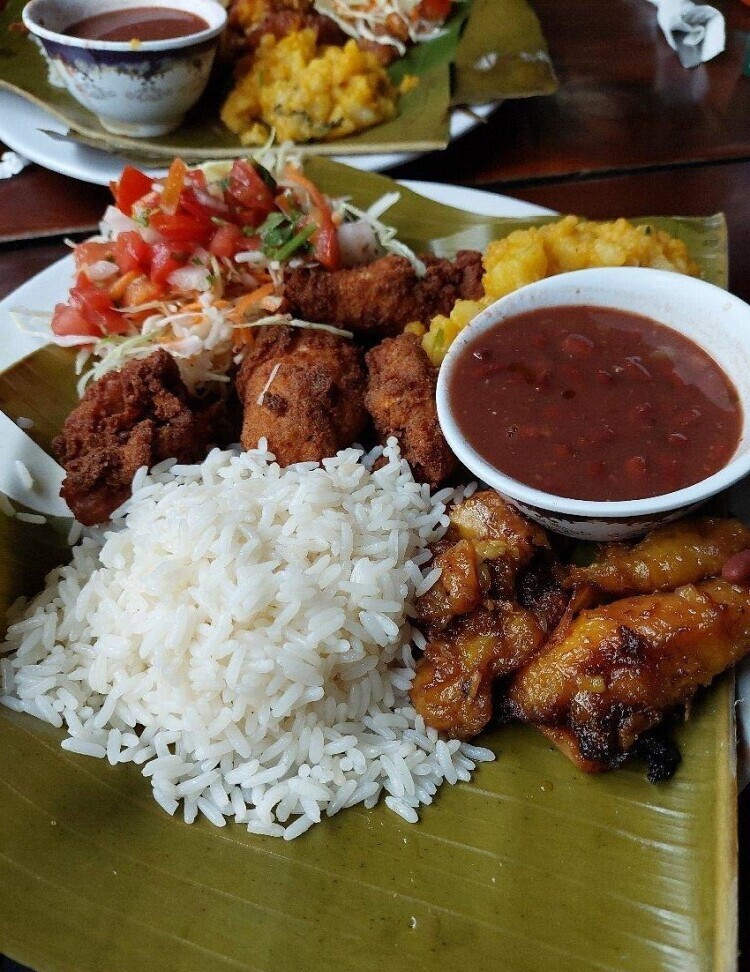
Before the Spanish arrived, Indigenous tribes were already cooking up a storm with corn, beans, and squash. When the Europeans came, they brought their own food, like meat and wheat, and mixed it with what they found. This led to dishes like olla de carne, a hearty stew that’s still a favorite today.
Jamaican migrants also left a significant mark, especially along the Caribbean coast. Their introduction of coconut milk to seafood stews and the use of root vegetables added depth and richness that’s now signature to Costa Rican dishes.
And let’s not forget about the influence of the United States. While it’s brought new restaurants and foods, it’s also changed the way Costa Rica grows food. But no matter where the flavors come from, one thing’s for sure: Costa Rican food is a delicious adventure waiting to be explored.
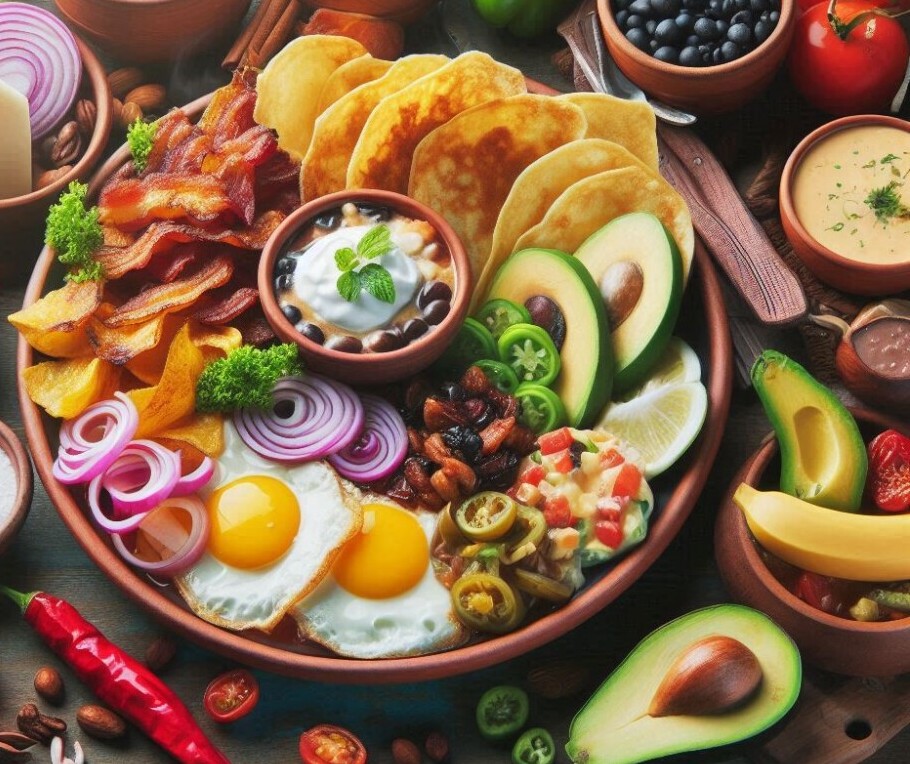
One of the cornerstones of Costa Rican food is its Indigenous roots. Long before the Spanish arrived, Indigenous communities used local ingredients and traditional cooking methods that still influence the country’s cuisine today. Corn, for example, isn’t just another crop here; it’s a cultural foundation. From the tortillas that accompany almost every meal to the chorreadas, those deliciously sweet corn pancakes, this ingredient is woven into the fabric of daily life.
When talking about Costa Rican dishes, gallo pinto deserves a spotlight. This classic rice and beans combo gets its unique flavor from bell peppers, cilantro, and onions. The name translates to “spotted rooster,” thanks to the appearance of black beans speckled through the rice. You’ll find it on breakfast tables with a fried egg or paired with meat and fish for lunch or dinner.
Gallo Pinto is a beloved traditional Costa Rican dish, often enjoyed for breakfast. Here’s a simple recipe for you:
Ingredients:
- 2 cups of pre-cooked white rice (ideally from the previous day)
- 1 15-ounce can of black beans, rinsed and drained
- 1 small onion, chopped into small pieces
- 1 red bell pepper, diced into pieces
- 2 cloves of crushed or minced garlic
- 1/4 cup of fresh cilantro, chopped
- 2 tablespoons of tangy Salsa Lizano or Worcestershire sauce
- 2 tablespoons of vegetable-based oil
- Season with salt and pepper to suit your taste
Instructions:
- Prepare the Sofrito: Use either a frying pan or a large skillet to heat the vegetable oil over medium heat. Add the chopped onion, red bell pepper, and garlic. Continue to cook for about 5 minutes or until the vegetables are soft and fragrant.
- Add the Beans: Add the black beans and let them cook for another 2-3 minutes.
- Mix in the Rice: Add the cooked rice to the skillet, separating any clumps. Stir everything together to mix with the beans and vegetables.
- Season: Mix in the Salsa Lizano (or Worcestershire sauce), and adjust the seasoning with salt and pepper to your liking. Continue cooking for an additional 5 minutes, stirring occasionally, until everything is thoroughly heated and well blended.
- Add fried eggs to make it more appealing(Optional)
- Top it off with Cilantro: Remove from heat and stir in the chopped cilantro.

Serving Suggestions:
Experience the heart of Costa Rican cuisine with Gallo Pinto. Pair it with classic breakfast favorites like fried eggs, plantains, and a slice of fried cheese for a truly satisfying meal. Don’t forget a cup of strong coffee ☕ to complete the experience.
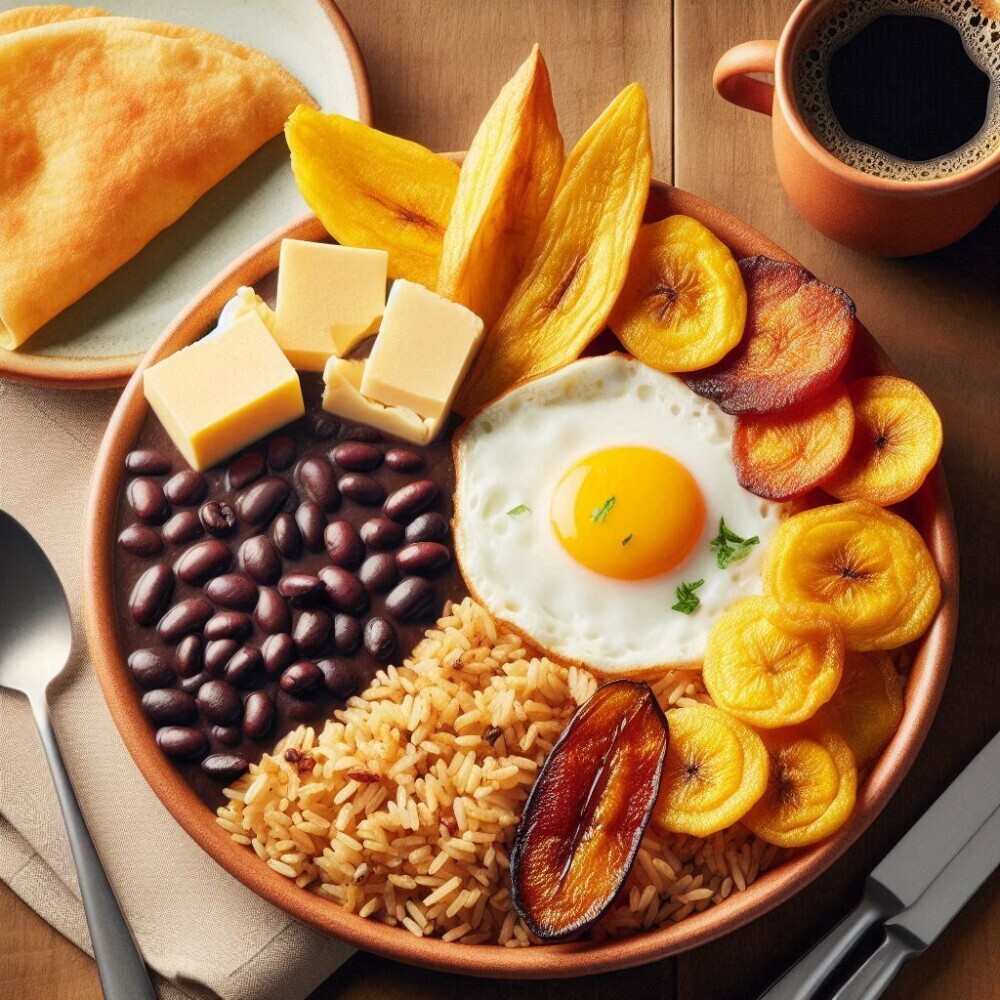
I hope you enjoy making and eating this delicious dish!
Have you tried any other Costa Rican dishes before?
Chifrijo is another must-try. This bar snack features fried pork and red beans, typically served with tortilla chips and chilera on the side. Think of it like a hearty nacho bowl but with a distinctly Costa Rican twist. It’s a popular choice in local cantinas and perfect for anyone wanting a taste of authentic Costa Rican comfort food.
Another popular Costa Rican Chifrijo Recipe:
- 1 cup of steamed white rice
- 1 cup of boiled red beans
- 1/2 cup crispy pork skins(chicharrones)
- 1/4 cup of fresh pico de gallo salsa
- 1 avocado, cut into slices
- Cut your Lime into wedges
- Tortilla corn chips (optional)
Instructions:
- Preparing your ingredients: Prepare the rice and beans using your chosen technique. Make the pico de gallo salsa by mixing diced tomatoes, onions, cilantro, lime juice, and your preferred spices.
- Assembling the chifrijo: In a bowl, arrange the cooked rice and beans in layers. Add the pork rinds and a hearty scoop of pico de gallo on top. Add lemon juice to your salsa for more flavor.
- Serving: Decorate with avocado slices and lime segments as desired. For more enticement accompany with tortilla chips!
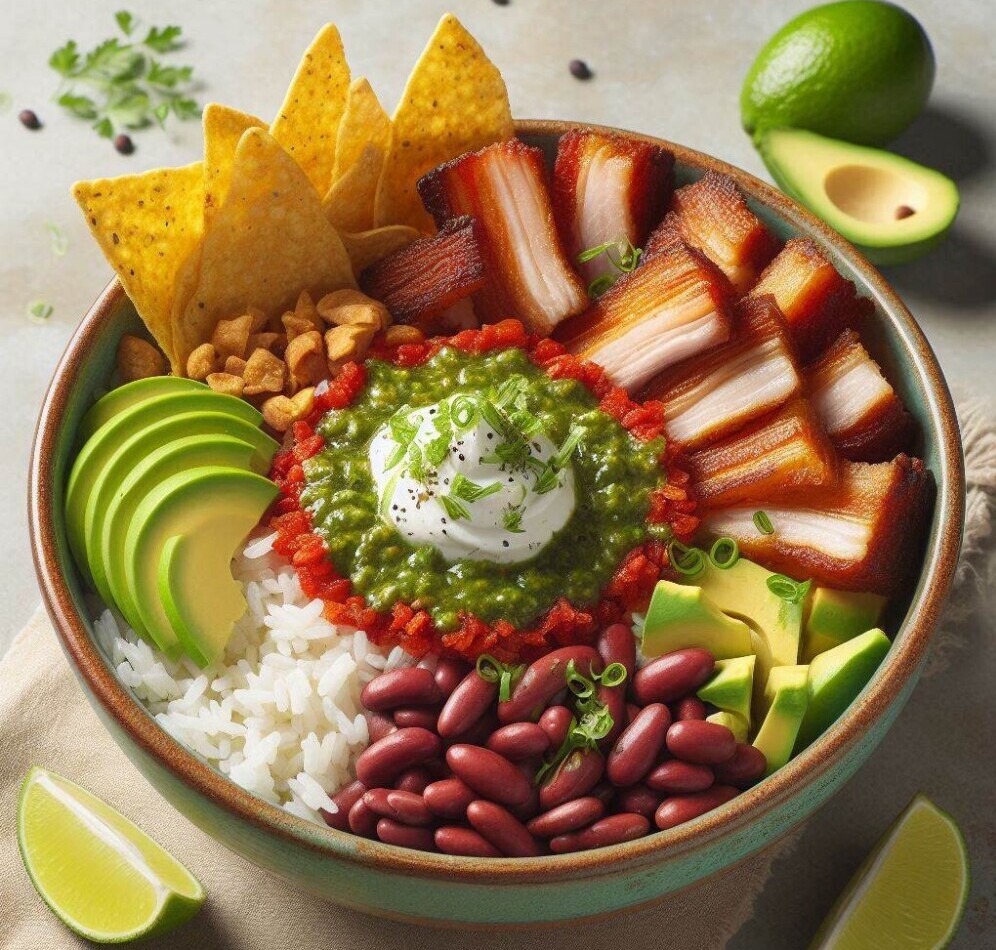
Now, if you find yourself on the Caribbean coast, you’ve gotta try rondón. A rich seafood and coconut stew, rondón is a Friday special whipped up with whatever the cook has left by the end of the week. Loaded with fresh fish, shellfish, plantains, and root veggies, all simmered in coconut milk, it’s a dish that brings together Afro Costa Rican flavors in a big way.
A Flavorful summary of Costa Rican Rondón Ingredients:
Costa Rican Rondón is a hearty and flavorful stew that showcases the vibrant flavors of the Caribbean coast. These ingredients create a harmonious blend of textures and tastes:
- Seafood: The white fish fillets, shrimp, and fish broth provide a rich and protein-packed foundation.
- Vegetables: The bell pepper, yams, cassava, plantains, and bay leaves add a variety of textures, sweetness, and earthiness.
- Spices and Aromatics: The onion, garlic, coconut milk, tomato puree, thyme, and scotch bonnet pepper (or habanero) infuse the dish with a complex and aromatic flavor profile.
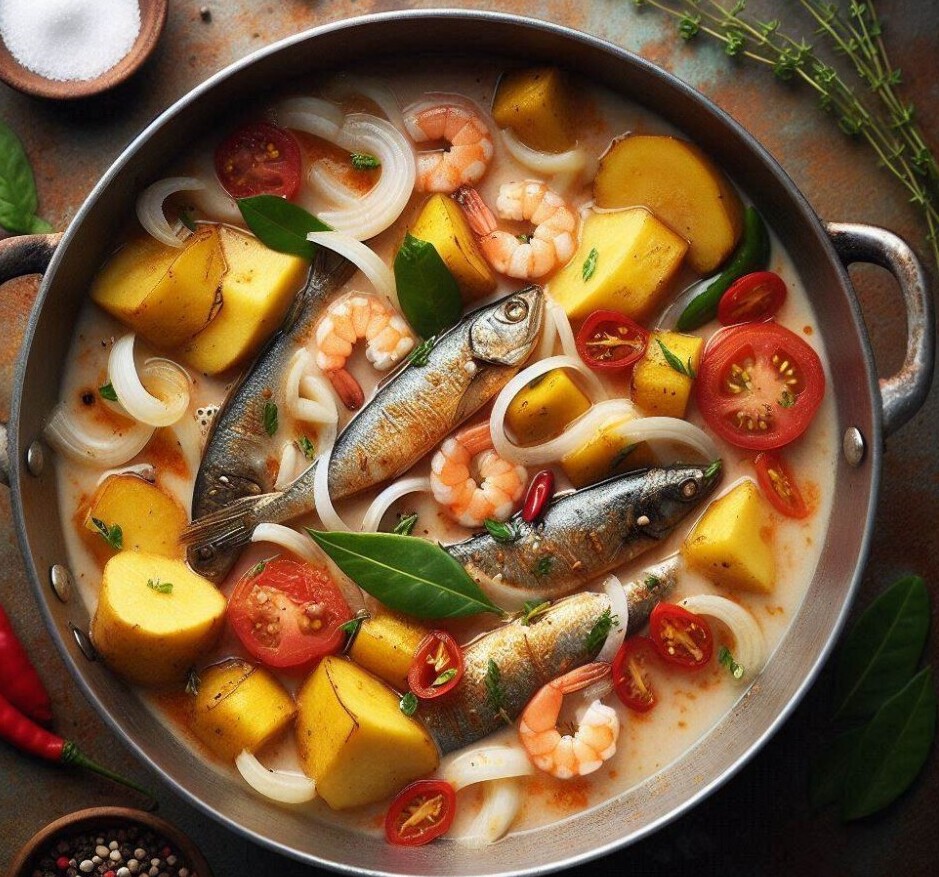
And let’s not forget the beverages. Costa Ricans love their drinks colorful and flavorful. Whether it’s a refreshing glass of agua de sapo made from raw sugar, ginger, and lime, or a traditional purple corn beverage called chicha, there’s always something to quench your thirst and add an extra layer of flavor to your meal.
Try this wonderful recipe for Agua de Sapo:
Ingredients:
- In a large pitcher, combine 1 gallon of water
- Add 1/2 cup of raw sugar
- 1 inch piece ginger, peeled and sliced
- Topp it off with a 1/2 cup of freshly squeezed lime juice or lemon juice
Instructions:
- Combining your ingredients: Mix together the water, raw sugar, and ginger in a large pitcher.
- Steep: Allow the mixture to rest for a minimum of 30 minutes, or up to an hour, so the flavors can fully develop.
- Strain: Pour the mixture through a fine-mesh sieve to filter out the ginger slices.
- Add Lime: Mix in the fresh lime juice.
- Serving: Serve chilled or with Ice
Suggestion: To enhance the ginger flavor, gently bruise the ginger before adding it to the water. For an added warm, spicy note, consider including a cinnamon stick during the steeping process.

Besides beverages, coffee is the most popular drink in Costa Rica and is renowned globally for its high quality. The country’s ideal climate and environment contribute to the exceptional quality of its coffee beans, which are hand-picked from eight distinct regions, each offering unique flavors. Costa Ricans typically enjoy coffee in the morning with breakfast and in the midafternoon, often paired with pastries, bread, or cake.
Costa Rica is renowned as one of the world’s top tourist destinations, offering visitors stunning natural views, beautiful gardens, parks, beaches, delicious food, excellent service, and some of the best coffee in the world. If you’re a coffee enthusiast, you might wonder what makes Costa Rican coffee so special. The answer lies in several key factors:
- It’s Illegal to Have Bad Coffee: Costa Rica takes its coffee quality seriously.
- Perfect Tropical Weather: Ideal conditions for growing top-quality coffee beans.
- Hand-Picked Coffee Beans: Ensuring only the best beans are selected.
- Eight Unique Coffee Growing Regions: Each offering distinct and delightful flavors.
- Healthy Environment: Contributing to the exceptional quality of the coffee.
These elements combine to make Costa Rican coffee a must-try for any coffee lover. ☕️

For an authentic taste of Costa Rican food, seek out local spots where the everyday Ticos dine. Sodas, the humble, family-run eateries scattered across the country, offer the real deal. Whether nestled along highways or in bustling urban markets, these places serve up the heart and soul of Costa Rican cuisine. From casados, the classic set meals featuring rice, beans, plantains, and a selection of meats, to regional specialties, you’ll find fresh, seasonal fare that transports you straight to the heart of Costa Rica’s food culture.
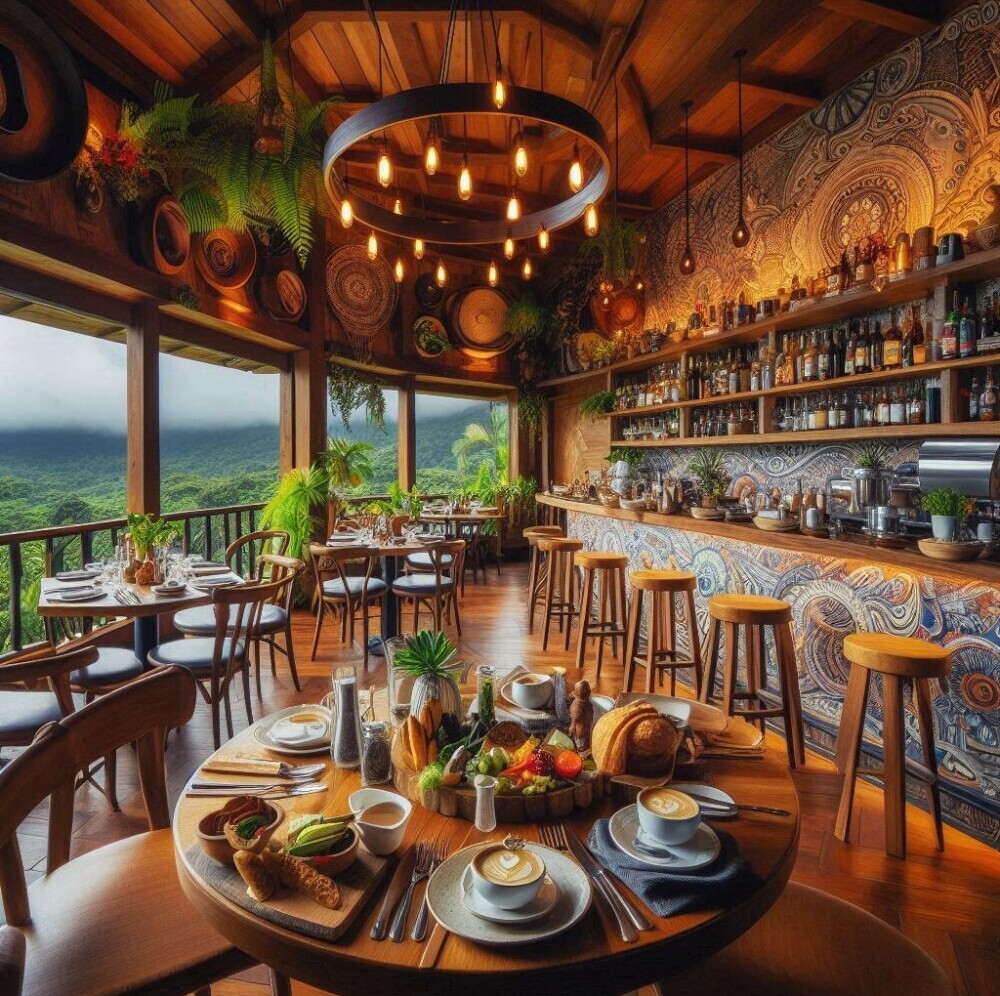
Below are examples of some common fruits and juices/shakes along highways and country roads, offering a variety of fresh fruits. Besides the usual mangoes and bananas, you can find unique fruits like water apples, soursop, star fruit, rambutan, mamey, and cashew fruit. These stands make for convenient and refreshing stops during your travels. ???
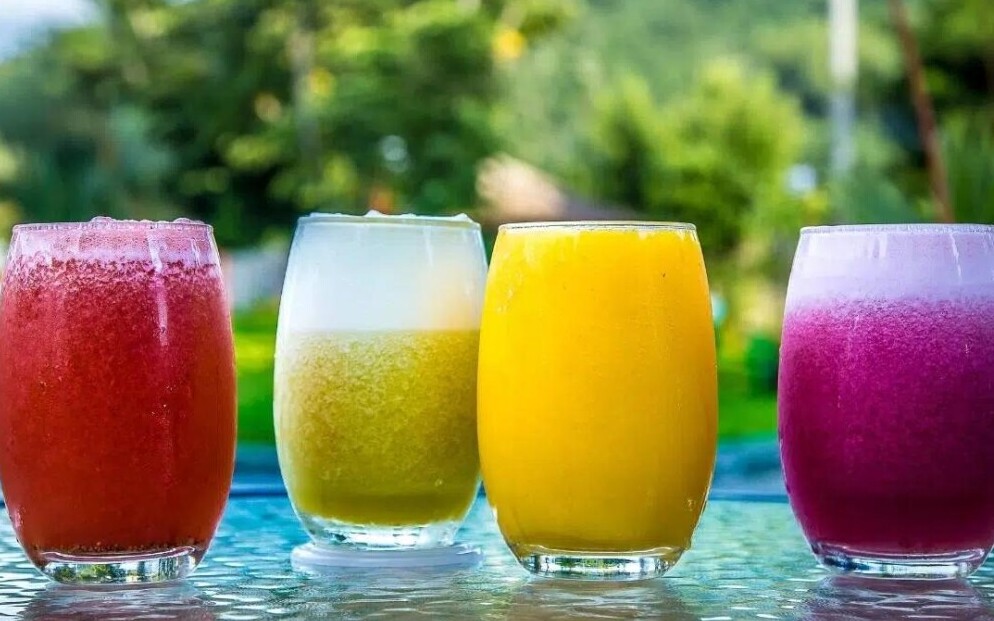

Costa Rican cuisine is a testament to the country’s rich history and cultural diversity. ??️ From the Indigenous roots to the Spanish colonial influence, each dish offers a unique journey through time and flavors. ??️ Whether you’re a seasoned foodie or simply looking for a new culinary adventure, Costa Rica’s culinary scene has something to offer everyone. ?✨ Ready to embark on this flavor-filled journey? Pack your bags and head to Costa Rica! ?✈️ Experience the vibrant culture, explore the stunning landscapes, and indulge in the delicious local cuisine. ??️ Don’t miss the opportunity to savor the authentic flavors of gallo pinto, chifrijo, rondón, flavorful natural fruit drinks, and more. Your taste buds will thank you! ??
Disclaimer: The information provided in this article is for general informational purposes only. It is not intended as professional advice or a substitute for consultation with a qualified nutritionist, dietitian, or medical professional. Always consult your healthcare provider before making any dietary changes or consuming specific foods or beverages; especially if you have allergies, medical conditions, or dietary restrictions. Always make informed choices based on your personal health circumstances